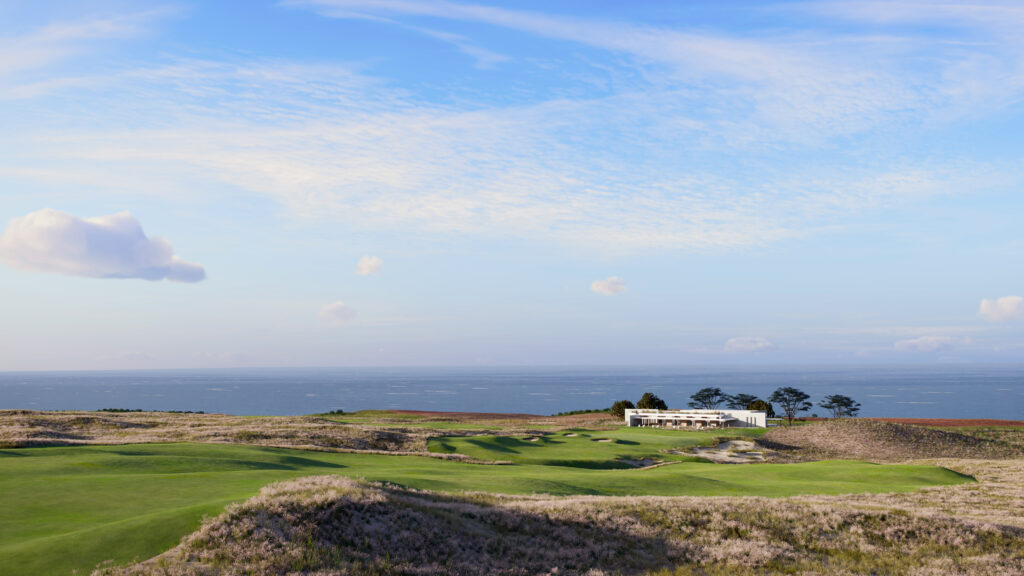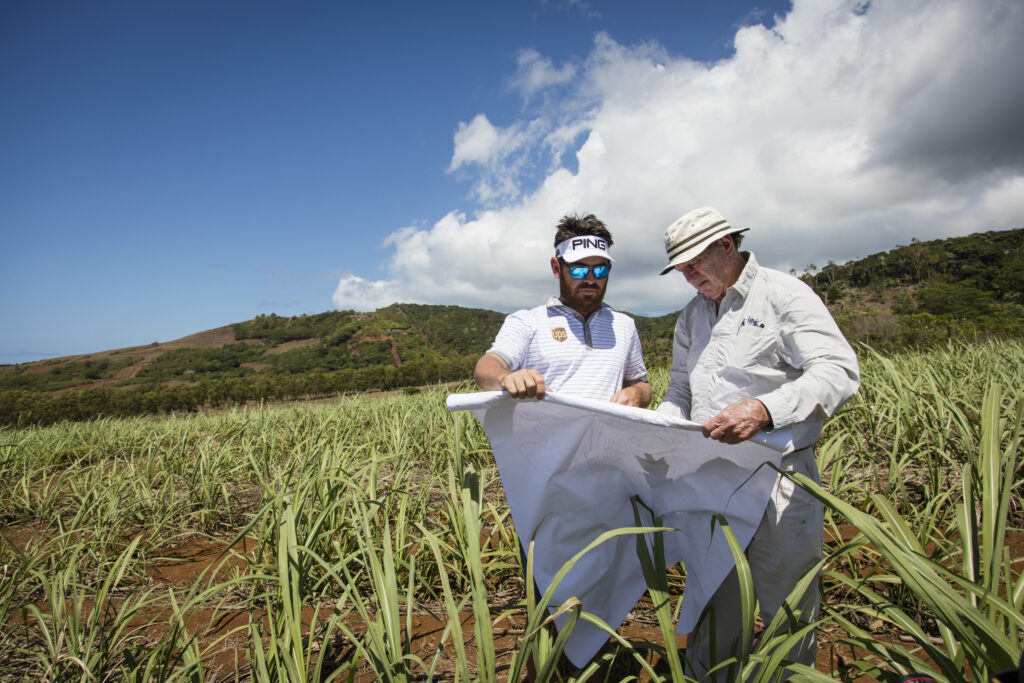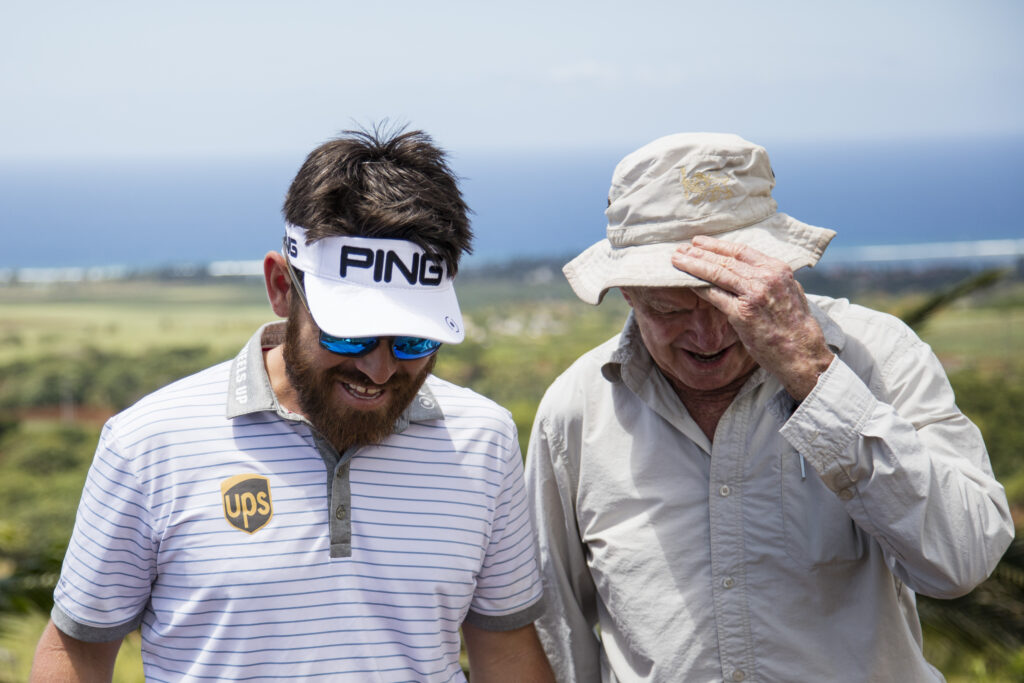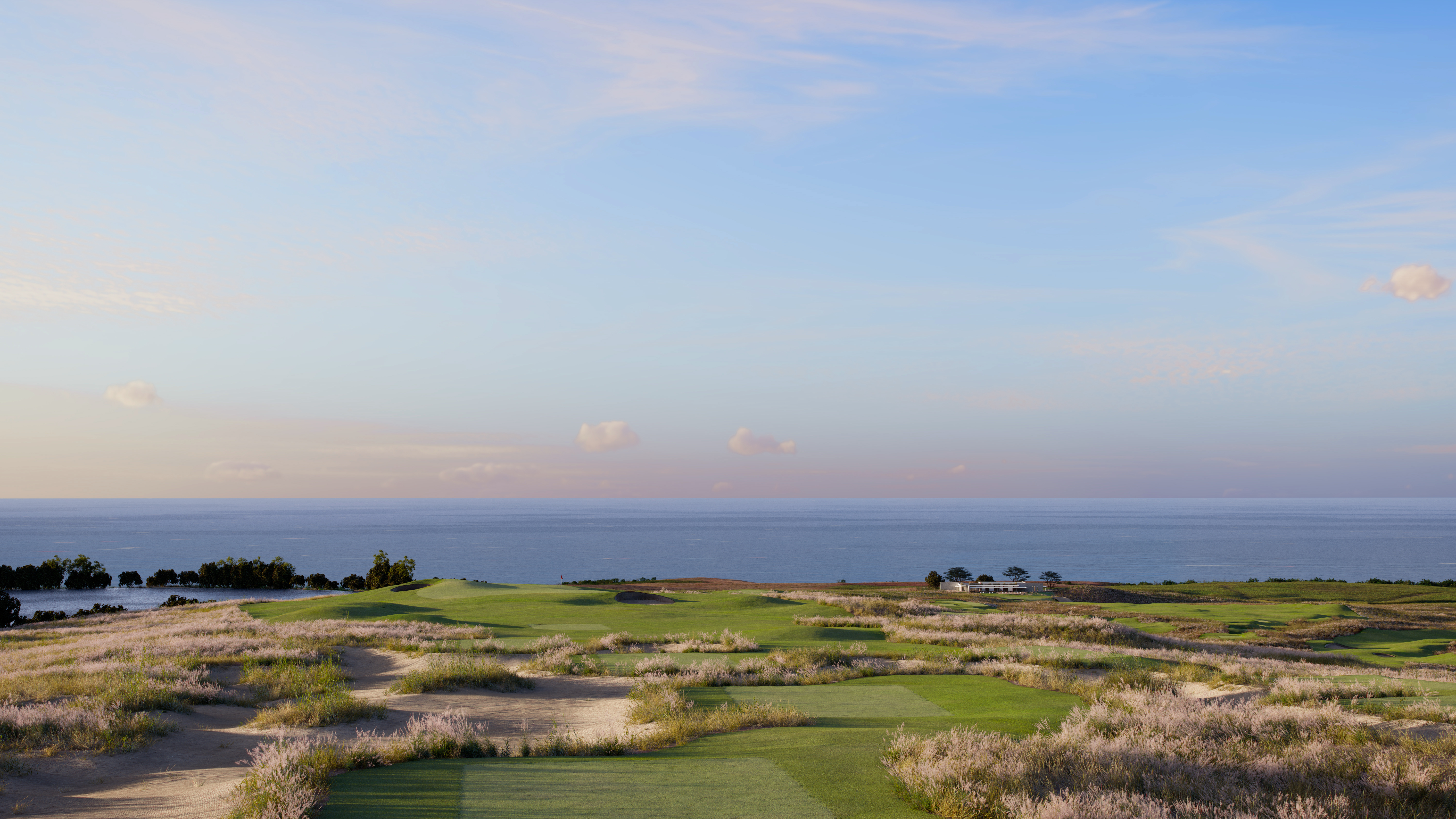La Réserve Golf Links at Heritage Golf Club, Mauritius, is the first and only contemporary links in the Indian Ocean. The course was co-designed by respected golf course architect Peter Matkovich, with former Open Champion Louis Oosthuizen. In this interview, Matkovich reveals how the pair have created an experience of pure golfing drama, how the course’s features and strategy reflect those of the great links and how, marooned on Mauritius for 10 months during lockdown, he was able to spend every day meticulously shaping each hole.
What makes La Réserve Golf Links different and special?
Firstly, we’ve created a course that looks and plays like a links. Secondly, because of its elevated position, with a downhill routing and spectacular views of the ocean on every tee and green, it’s dramatic and exciting to play.

Tell us about the links look and feel.
We have created a links look through shaping the land and a lot of movement on the fairways and greens. Strategically, it plays a lot like the old links courses, where your challenges are up before you and you have to decide which way you are going to play each hole; you really have to think about it.
Do you have to play more along-the-ground shots, like a traditional links?
Absolutely. It’s not a course where you can power your way around and hit high shots into elevated greens. We’ve gone back to how links was played, low along the ground, bouncing it in. I thought about some of the great players like Peter Thomson, Bobby Locke and Gary Player and how they mastered links, by playing the course in front of them and the shots each hole required. And I think it’s a wonderful way to play the game.
The course starts high up and descends downhill. Tell us about the elevation.
What we were trying to achieve on this piece of land, which used to be a sugar cane plantation, was to get the golf course as high as possible. It really is spectacular from the top with long views down across the course and then out across the ocean. We looked at a variety of options and decided the best thing was to do something unique and go up, start at the top and then play all the way back down to the clubhouse. From the moment you get to the 1st tee until the 18th green, there are so many “Wow!” moments.
How did you route the course?
The elevation difference from the top to the clubhouse is nearly 200m, so we were obviously going to have a lot of downhill holes. But at the same time we didn’t want every hole just to keep going downhill, so we have four or five holes that play slightly uphill to get the balance right and create variation.

How significant are the changes in elevation?
There are two of three holes where the elevation changes are huge. In fact, our 5th hole, a par-5, has a drop of 60m from the back tee down to the fairway. It’s always better in my eyes to be playing slightly downhill. I think it’s more enjoyable.
Tell us about the greens.
The face of a golf course, the character of a golf course, is its greens. That’s where it happens. Our greens have a lot of slopes. Why? Because we have different pin placements. If you don’t hit it in the right area you will have difficulty in two-putting, but that’s what golf is. Along with our shaper, Ryan O’Connor, we’ve really been meticulous creating subtle, little slopes on the greens.
And you’ve created what you call infinity greens?
One thing that is unique to La Réserve Golf Links is that we have a lot of greens where we don’t have backdrops. A lot of courses now have artificial mounds at the back and that makes it easy to get good depth perception. But we have a lot of greens that we have named infinity greens because all you see in the background is the sea or the horizon. Now you’ve got to judge the distance and get the right feel.
What about the bunkers?
You’ve got to go back to golf design and think what bunkers should be. For today’s tour professionals, they’re often no more than sand pits, not even a challenge. But we’ve changed that. As with the classic old links golf courses, we have revetted bunkers where if you are in it, it’s a minimum of half a shot. I think that’s important, because as a player, you’ve got to think about avoiding the bunkers.
There’s an interesting mix of holes, including some very strong par-3s…
We have five par-3s on this golf course which really stand out. There are multiple tee positions and with the wind that gives us variation and makes them a great challenge. We also have a great mix of par-4s, including driveable par-4s and very difficult par-4s, and then reachable par-5s. So the mix is one of the most exciting aspects about the golf course. In fact, most people who have seen it say, wow, every hole looks different! I think that’s wonderful.
What’s it been like working with Louis Oosthuizen on the design of La Réserve Golf Links?
This project is a co-design with Louis Oosthuizen. People always ask how involved he’s been. I say look at the man, look at his golf swing, look at how he goes about golf. He’s very quiet and humble, and he wants to learn because in the future, when he’s finished playing competitively, he wants to become a golf course designer. So we’ve worked closely, we talk to each other and he’s gained experience – and I’ve enjoyed his inputs, one of which was a special set of back tees.

Tell us about Louis’ back tees?
They’re called the Louis 57 tees, which are way back. In fact, I don’t even go there – I get frightened to look at it! But seriously, what we are trying to achieve is a golf course that can challenge DP World Tour players and still be a challenge for the average player. The problem today is that so many people play off the wrong tees and you’re going to get punished if you play off a tee you don’t belong on. So my advice here is please play off the right tee!
This golf course became a labour of love when you were stuck here during lockdown. What happened?
It’s true. When Covid came, I was here and couldn’t get home to South Africa for over 10 months. So I was on site every single day working with our lead shaper Ryan O’Connor. We formed a real bond and understanding of what we were trying to achieve. You know, designing the golf course on paper is so different from putting a golf course in the ground. It’s the difficult job that everybody overlooks. But we had extra time to get to work on that and Ryan did a magnificent job – and it shows in the finished golf course.
What about nature and sustainability?
We were given a piece of ground that was an old sugarcane plantation and had no features. One of the important elements we have introduced is the wild, indigenous grasses which are obviously native to the island and blend perfectly into the links landscape and are completely natural. It’s absolutely beautiful, spectacular.
What do you want golfers to experience at La Réserve Golf Links?
I think people are going to want to play it because it’s different, it’s unique. You start at the top and come all the way down, back to the clubhouse. Most of all they’re going to want to play it because it’s a challenge. Where do golfers go and play? Many play on the most difficult, challenging golf courses, as long as they are fair. What do people talk about when they play the Old Course St Andrews? You hear they made a par at 17th, not a par at the 2nd or 3rd. Golfers like to be challenged – and that’s what they’ll experience at La Réserve.
What does Mauritius offer the world golfer?
I first visited Mauritius 25 years ago. There were only a couple of golf courses then. Look at Mauritius today – there are more than 10 international layouts, making Mauritius a definite golf destination today. Now, for the first time, at Heritage Golf Club, we have a contemporary links golf course – and that’s something special for Mauritius. I think it’s the only course from which you see the sea on every tee and every green. La Réserve Golf Links is dramatic and an exceptional experience. Come and play it and you’ll see.
WATCH: Introducing La Réserve Golf Links: Pure Golfing Drama
